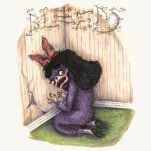The Bandemic: When Will the Next Banana Pandemic Strike?
Photo by Mike Dorner/Unsplash
Out of all the fruits we consume in the U.S., the banana is by far the most popular. It’s sweet, it’s cheap and it’s easy to access, despite the fact that most states do not have a climate suitable for its cultivation. Even though we eat a lot of bananas in this country, most of us haven’t even scratched the surface of banana diversity. There are over 1,000 different types of bananas, but you’re probably only going to see one variety in the supermarket. This variety, known as the Cavendish banana, is widely exported from banana-growing regions to countries around the world.
Cavendish bananas are the kinds of bananas you always see at the grocery store. They’re long, relatively thin and have that distinctly banana taste you either love or hate. You probably know them well, which is why it’s so strange that just a few decades ago, banana consumers were getting a totally different product.
Before the 1950s, people weren’t packing Cavendish bananas in their kids’ school lunches, and they rarely appeared in peanut butter and banana sandwiches. Instead, the most widely produced and exported banana species was the Gros Michel. According to reports, the Gros Michel banana had a totally different flavor profile than today’s bananas; many say it was tangier, creamier and more complex. So why did banana producers decide to nix the Gros Michel and move onto the Cavendish?
It actually wasn’t a choice at all. In the 1950s, a fungus called fusarium wilt, or Panama disease, infected Gros Michel plants all over the world, killing them and leaving very few plants in its wake. The disease took such a dramatic toll on banana populations because cultivated bananas are purposefully bred not to have seeds. Therefore, they can not reproduce—they’re clones. Since all Gros Michel bananas were genetically identical, they were all extremely susceptible to the same disease.
In classic human fashion, we did not learn our lesson. Instead of planting a wider variety of banana species to stave off possible extinction, we instead turned to a new variety: the Cavendish. The Cavendish was chosen because it was more disease-resistant than other cultivars, but since it too is a clone, it still puts us at risk for another banana pandemic.
-

-

-

-

-

-

-

-

-

-

-

-

-

-

-

-

-

-

-

-

-

-

-

-

-

-

-

-

-

-

-

-

-

-

-

-

-

-

-

-








































